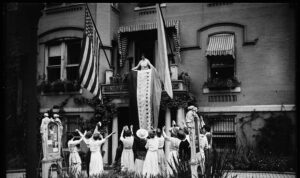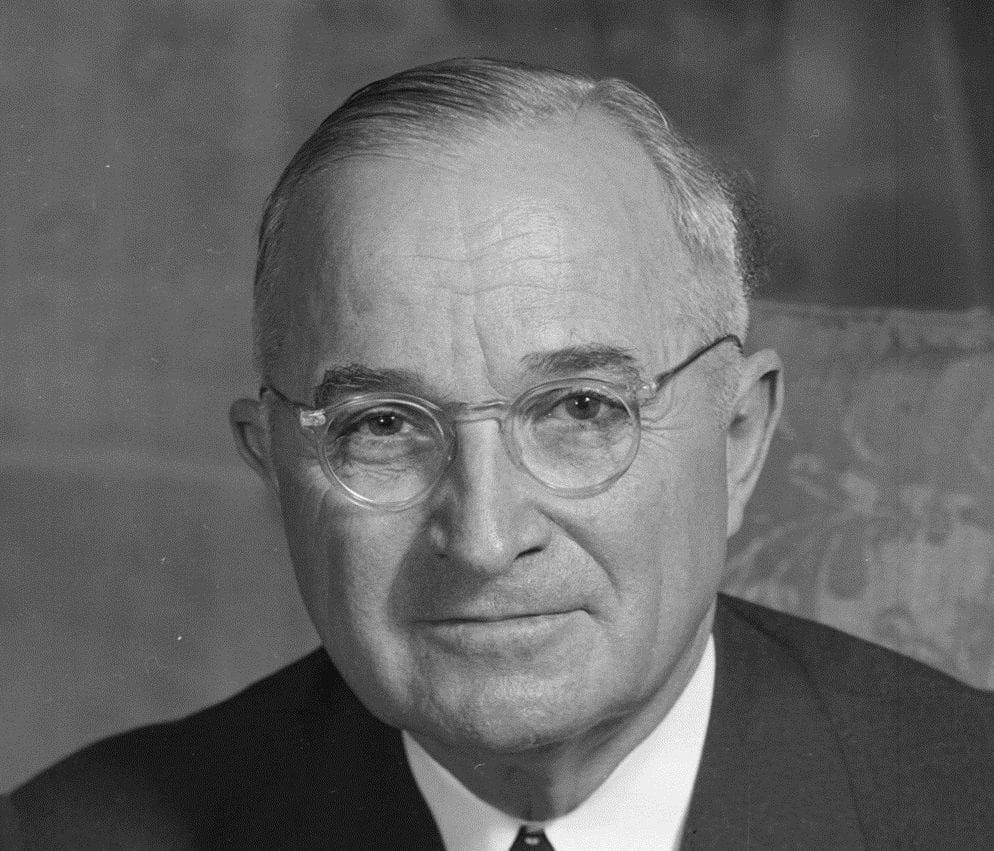
75th Anniversary of President Truman's Civil Rights Commission
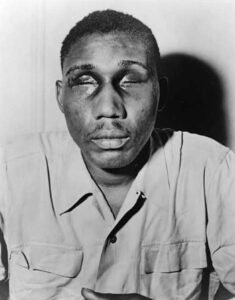
World War II created such a need for manpower, that it drew African American men and women into the national effort for victory. As the war came to an end, they hoped not only to maintain what they had achieved, but to gain full equality as American citizens. At the same time, they remembered the violent reassertion of the status quo following World War I. In 1946, that seemed to be recurring, as whites carried out violent attacks on African American veterans, including the beating to blindness of Isaac Woodard (1919–1992), who was on his way home in his uniform, because he argued with a white bus driver.
In response to this violence, civil rights activists organized the National Emergency Committee Against Mob Violence to publicize what was happening. Organizations involved in the Committee included the National Association for the Advancement of Colored People, the Urban League, the Federal Council of Churches (forerunner of the National Council of Churches), and the American Federation of Labor. Former First Lady Eleanor Roosevelt was a member. Representatives of the Committee met with President Truman at the white house in September 1946.
Truman’s Response
When Truman heard their account, he promised to set up a Presidential Commission on civil rights. The Commission issued its report, To Secure These Rights, in December 1947. The Commission took the title of its report from the statement in the Declaration of Independence that men have rights, and “that to secure these rights, governments are instituted among men, deriving their just powers from the consent of the governed.”
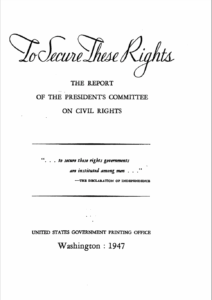
The report was a comprehensive statement of the obstacles that prevented African Americans and other Americans from full citizenship and equal participation in American life. Among other issues, the report covered lynching, police brutality, voting and employment rights, as well as access to housing, education, and public services and accommodations. It also addressed infringements of rights of conscience, and free expression (including the rights of Communists to express their views); the internment of the Japanese in World War II; and discrimination in the military and in medical care.
The report proposed a broad range of remedies, including using the full power of the federal government and the judiciary, principally, the Supreme Court. Truman used the power of his office to desegregate the U.S. military, one of the report’s recommendations, by executive order in 1948. In its attack on the principle of “separate but equal,” the report anticipated by seven years the Supreme Court’s decision in Brown v. Board of Education. Overall, the report set the reform agenda for the next two decades. Its recommendations became law in the Civil Rights Act (1964), the Voting Rights Act (1965), and the Fair Housing Act (1968).
The Politics of Civil Rights
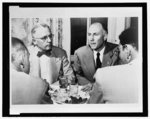
Truman ran some political risk by pushing civil rights because it alienated many southern Democrats. They broke away from the Democratic party in 1948 to form the short-lived Dixiecrat party. On the other hand, the migration of southern Blacks to northern cities before and during the war made them an important group of voters for northern Democrats. The first African American member of Congress since 1901, Oscar Stanton De Priest, elected in 1929, was from Chicago, a major destination for blacks leaving the south. (De Priest was a Republican, but as the FDR’s realignment of American politics took hold, he was replaced by an African American member of the Democratic party in the election of 1934.) Truman’s efforts had the support of these transplanted Blacks and the support of northern Democrats, who relied on their votes.
For further reading, please check out the following documents:

